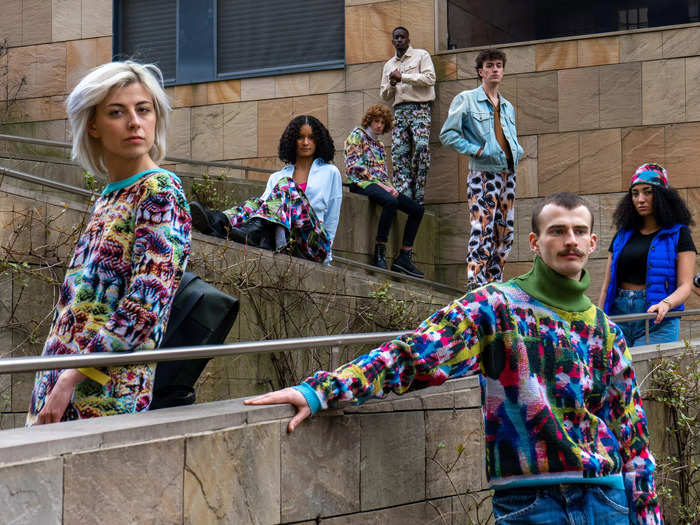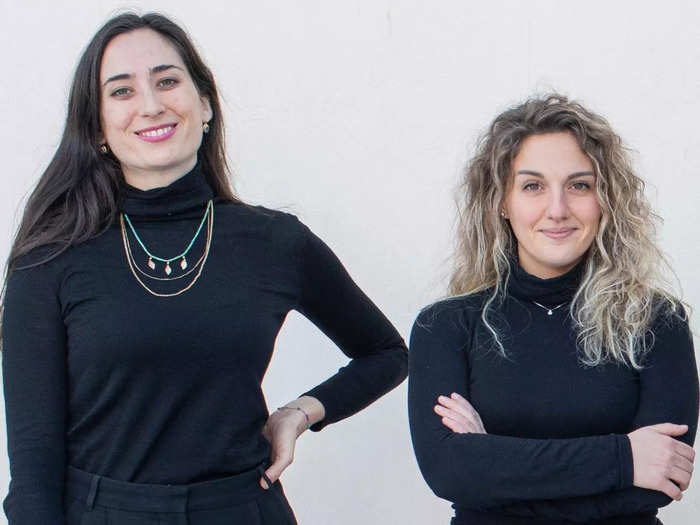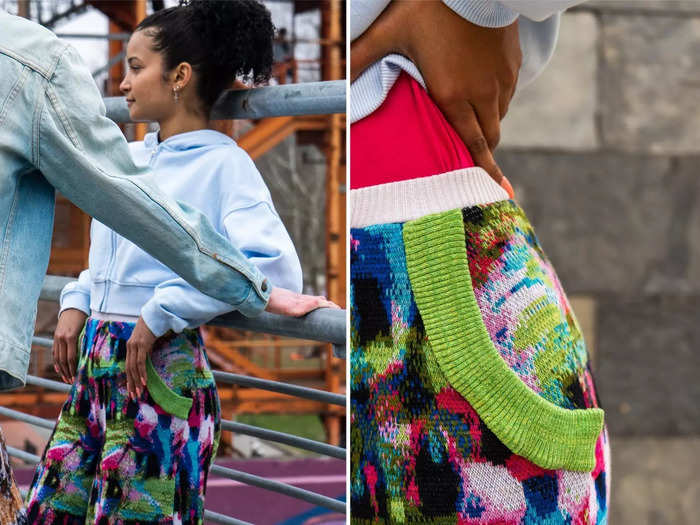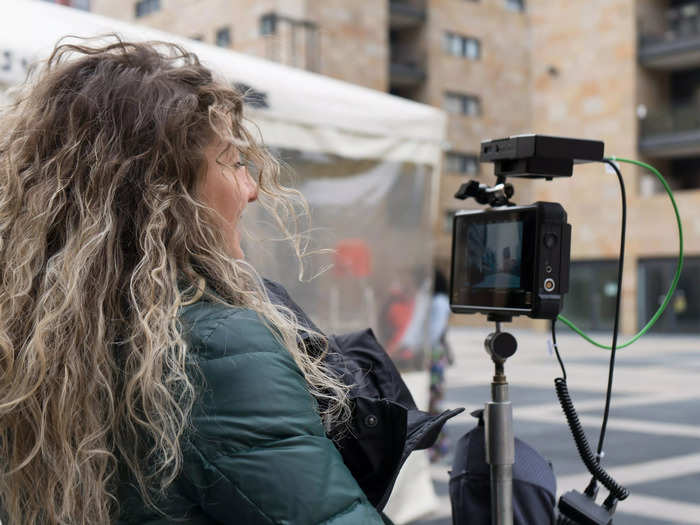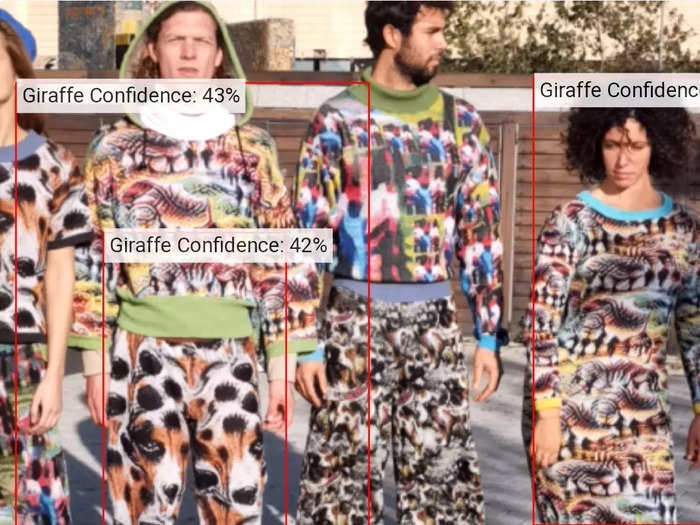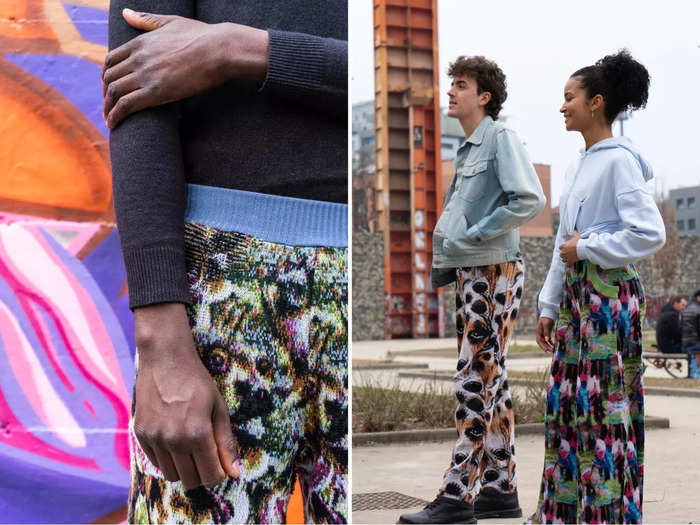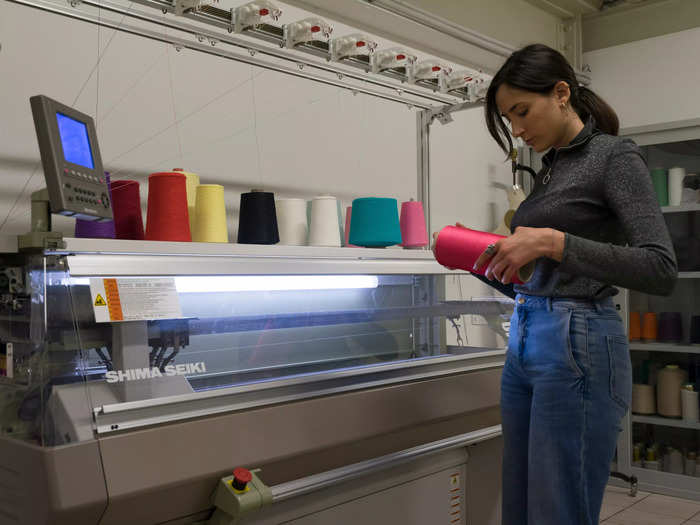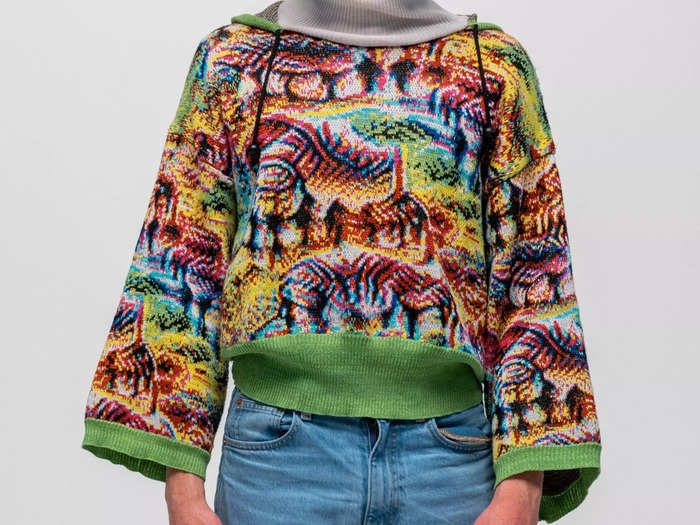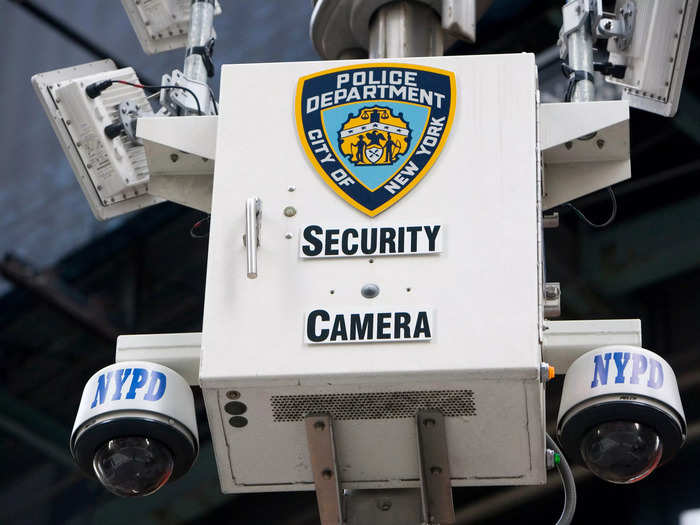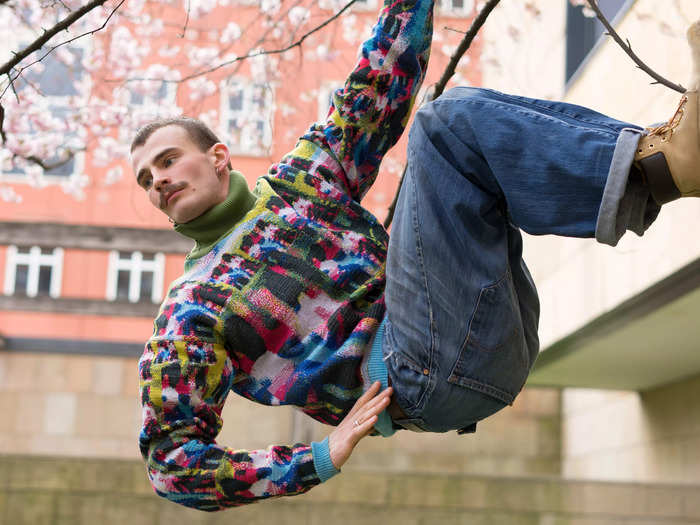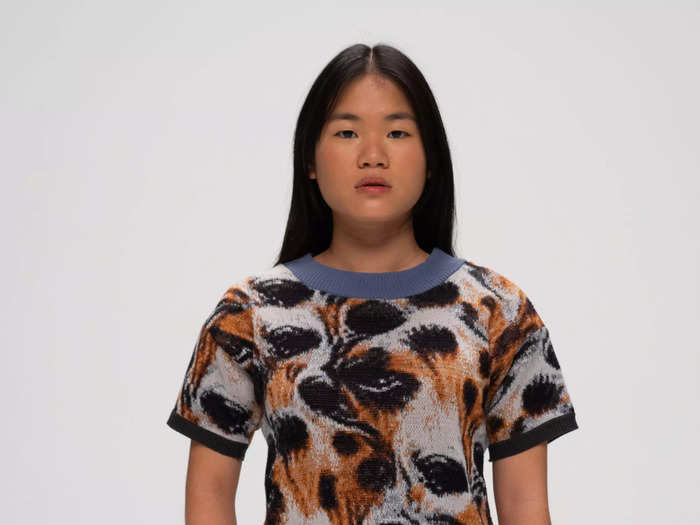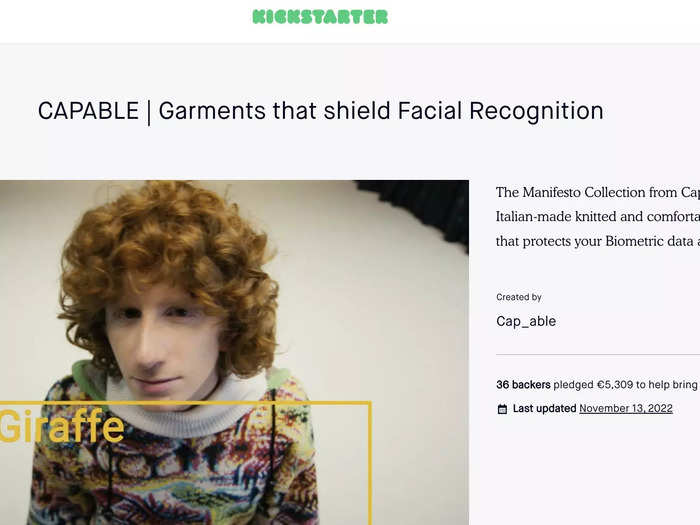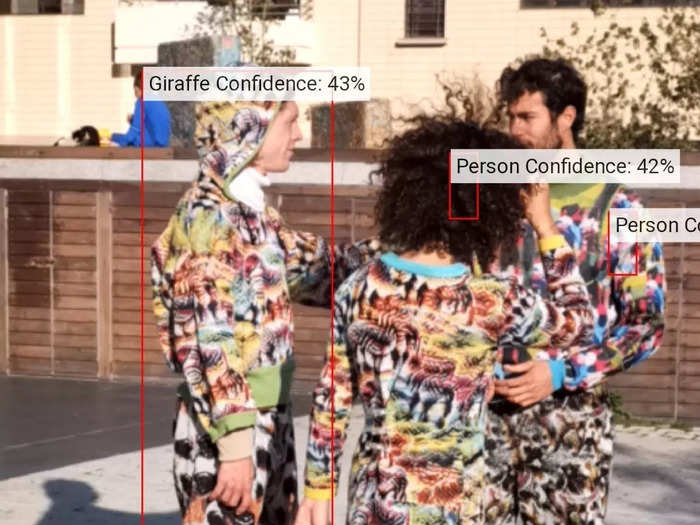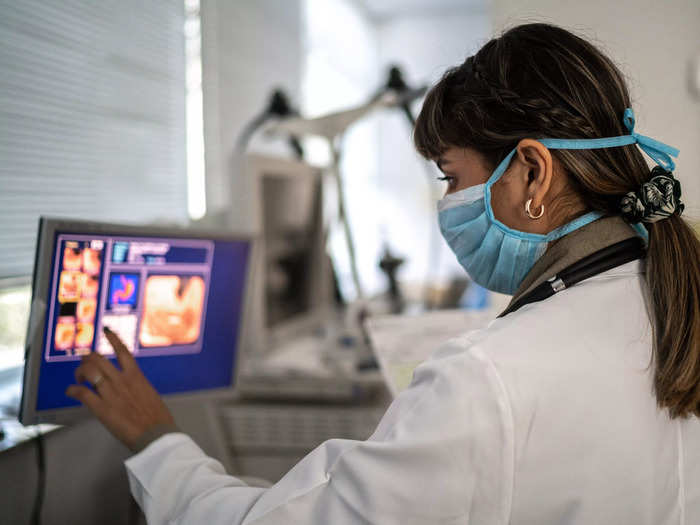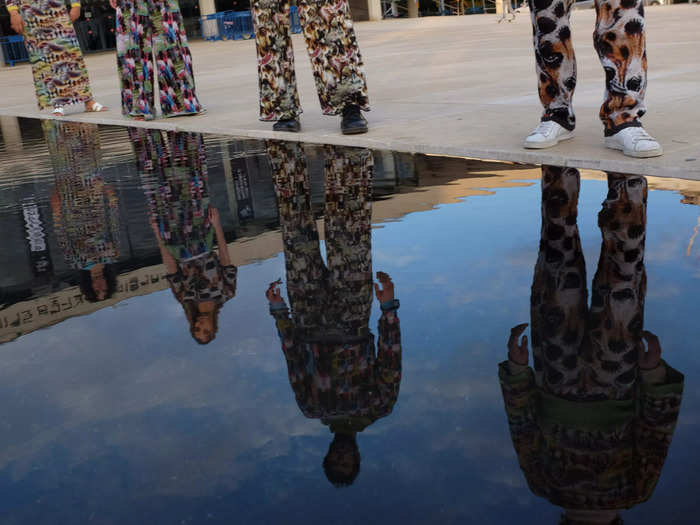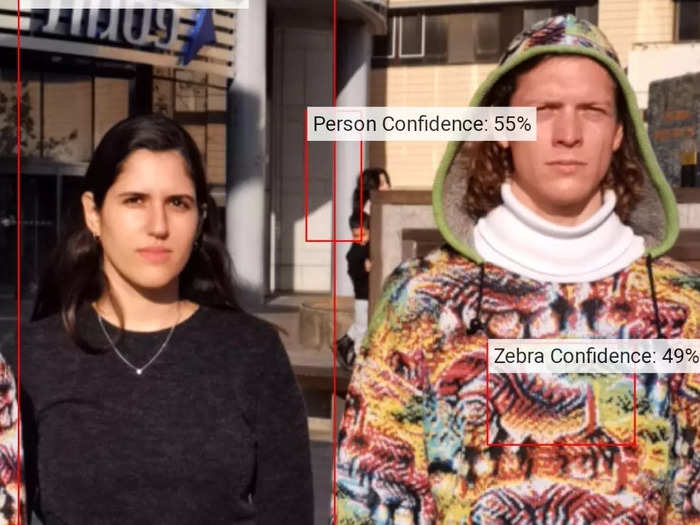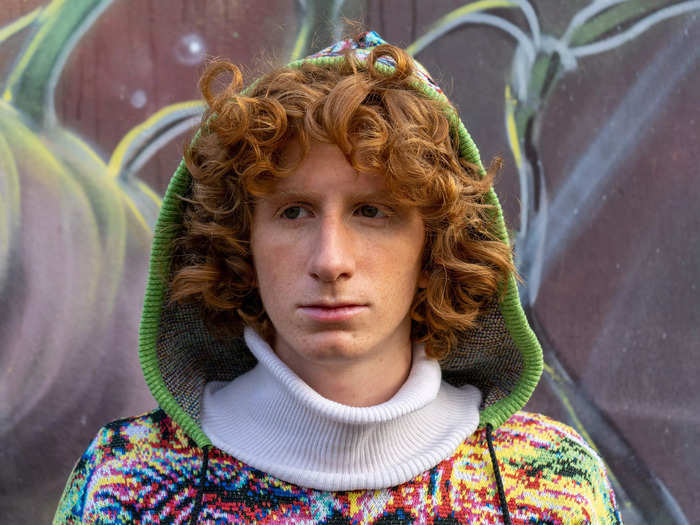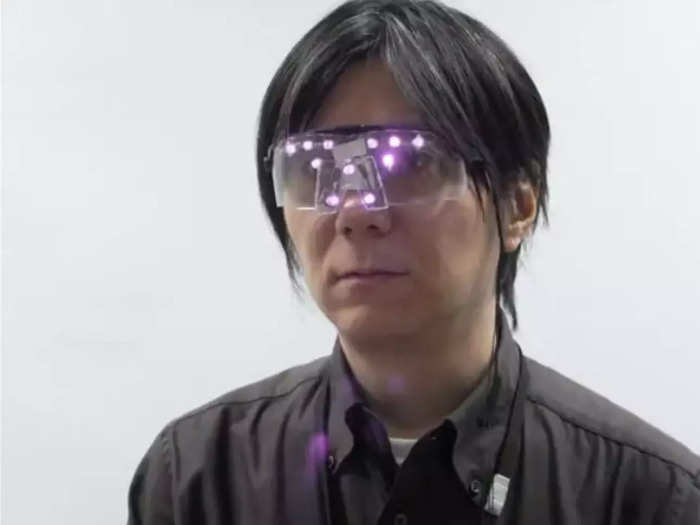The Manifesto Collection was designed to highlight the value of privacy.Cap-able
- An Italian startup has created a clothing line that aims to trick facial-recognition cameras.
- It uses patterns created by algorithms to fool cameras into thinking the wearer is not human.
Facial-recognition technology is everywhere. It's used by police, airports, supermarkets, stadiums, and more — and it's making some people fear that governments or big companies could use our data in malicious ways.
In response, privacy-focused designers have tried to create things we can wear that outsmart facial-recognition technology. The Italian startup Cap-able is the latest to join this trend.
Many options for helping people outsmart facial-recognition involve wearing a mask, but the Italian fashion startup Cap-able aims to do the same thing without the need to cover your face.
Cap-able says it aims to "combine fashion design and technology." Cap-able
The Turin startup was set up by Rachele Didero, who learned about facial-recognition technology while studying at the Fashion Institute of Technology in New York, and Federica Busani.
Rachele Didero, left, and Federica Busani. Cap-able
The Manifesto Collection — Cap-able's inaugural project — went on sale last month after nine months of research and testing. It says it uses animal-based patterns to deceive facial-recognition software.
Cap-able
Busani told Insider she believed "biometric surveillance is a threat to the freedom of expression, movement, association."
Cap-able
The patterns were developed by an artificial-intelligence algorithm. They incorporate animal-inspired shapes — which the brand calls "adversarial patches" — with the goal of tricking software into classifying the wearer's body as an animal.
Some of the company's clothes. Cap-able
The fabric was patented in 2021 with the sponsorship of Polytechnic University of Milan.
Giovanni Mereghetti/Education Images/Getty Images
Being identified as an animal often stops facial-recognition software from starting to begin analyzing, collecting, and storing your biometric data, the company says.
The garments are intended to protect wearers' biometric data. Cap-able
The garments have been designed to outsmart real-time surveillance video in public urban environments.
The garments are designed to trick facial-recognition cameras in public places. Cap-able
The Manifesto Collection includes sweaters, hoodies, trousers, and dresses.
Cap-able has produced knitted trousers, as well as sweaters and hoodies. Cap-able
The garments are made from 100% Egyptian cotton. The company adheres to the Better Cotton Initiative, which supports cotton-growing communities.
Filmar adheres to the Better Cotton Initiative. Cap-able
The clothes can be shipped worldwide — but they come at a steep price. This knitted hoodie, currently discounted, costs 420 euros, or about $450.
A Cap-able sweater. Cap-able
Surveillance technology is becoming increasingly common. A 2016 study by Georgetown University found that more than half of Americans' faces were logged in police databases — and that number has likely grown.
Ramin Talaie/Corbis/Getty Images
Cap-able told Insider it had sold about 70 items so far — mostly in the US, the UK, and Italy.
The clothes are made of Egyptian cotton. Cap-able
"The easiest markets to tackle are certainly the ones where the topics of biometric surveillance are already discussed, like the US or UK," Busani told Insider.
This short-sleeved sweater is intended to make facial-recognition cameras think you're a dog or a giraffe. Cap-able
They raised money through a crowdfunding campaign on Kickstarter and their website. Its cofounders have full-time work outside Cap-able, but they're hoping to build the startup's income and influence by sharing their designs with other brands.
Kickstarter
The team at Cap-able said it tested its designs using YOLO, an algorithm for real-time object detection.
The team tested the designs using YOLO. Cap-able
YOLO, which stands for "you only look once," is an open-source image-detection system that has been used in industries including healthcare. It locates individual objects and guesses what they might be.
FG Trade/Getty Images
Busani said at least 60% of people wearing the collection during testing were not detected as humans and instead identified as animals — including zebras, giraffes, and dogs. "Our garments are not infallible, and we work every day to improve the technology," Busani said.
The designs might be flashy, but they're intended to be more wearable than other options. Cap-able
The accuracy of facial-recognition software depends on factors, including how fast you're moving, how close you are to the camera, how light it is, and what's in the background. Algorithms are being developed to overcome anti-facial-recognition tools, so it could get tougher to outsmart them.
The software's accuracy depends on factors like motion, light conditions, and proximity. Cap-able
Cap-able's website says: "The Manifesto Collection's intent is not to create an invisibility cloak, rather, it is to raise awareness and protect the rights of the wearer wherever possible."
Cap-able
They're not the first clothes to try to trick facial-recognition software, but Cap-able wants its products to be more wearable than previous incarnations.
Cap-able calls its patterns "adversarial patches." Cap-able
Insider previously collected a list of designs intended to outsmart facial recognition — including a lens-shaped mask and goggles fitted with LEDs.
National Institute of Informatics/Isao Echizen

